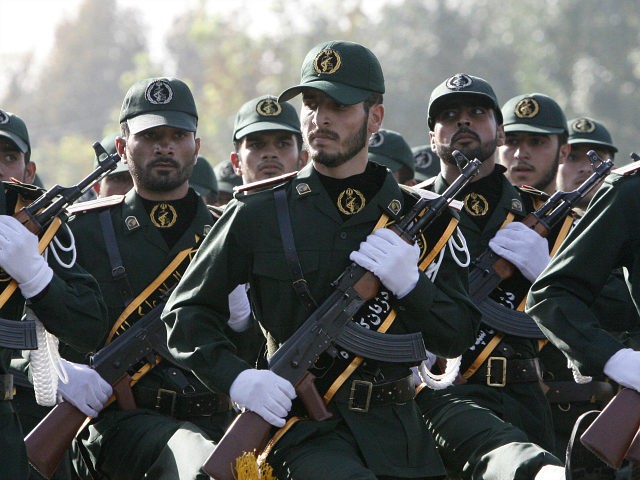Iran’s elite Revolutionary Guards have reportedly deployed their forces to three provinces in an attempt to quash anti-government protests who are intent on dismantling the Islamic regime and replacing it with a free, democratically-elected government.
So far, at least 21 people have died and hundreds have been arrested, according to media reports. However, those figures were provided by the Iranian government, and it is likely the numbers are far higher as Iran enters its eighth consecutive day of protests.
On Wednesday, General Mohammad Ali Jafari, chief of Iran’s Revolutionary Guards (IRGC), was quoted on the IRGC’s website announcing “the end of the sedition” of protesting. Jafari reportedly said, “A large number of the trouble-makers at the center of the sedition, who received training from counter-revolutionaries … have been arrested and there will be firm action against them.”
Jafari also claimed the protests saw “a maximum of 1,500 people in each place, and the number of troublemakers did not exceed 15,000 people nationwide.”
However, in just one video posted on YouTube, an Iranian man attending a protest in the southwest Iranian city Ahvaz, can be heard saying, “this is the 50,000-person protest in Ahvaz.”
Reuters reported that, in an attempt to use propaganda to quell protests, the government deployed pro-regime Iranians to the streets in several cities on Wednesday morning chanting, “The blood in our veins is a gift to our leader (Khamenei),” and “We will not leave our leader alone.”
Reuters also reported that Iran’s state-run television broadcast live footage of the rallies as the propagandists held up Iranian flags and portraits of Supreme Leaders Ayatollah Ali Khamenei. They reportedly also accused the United States, Israel, and Britain of inciting protests while shouting, “The seditionist rioters should be executed!”
Access to social media platforms like Telegram and Instagram was cut off by the government one day into the protests, which began on December 28, in an attempt to shut down the uprising. However, the U.S. State Department announced on Tuesday that it would use Facebook and Twitter to communicate directly with Iranians.
“We support a freedom of the press,” the State Department said in a tweet. “When a nation clamps down on social media, we ask the question—what are you afraid of? We support the people of #Iran, and we support their voices being heard.”
Meanwhile, in France, President Emmanuel Macron appeared to revive the Obama administration’s approach to Iran by suggesting that the tone of rhetoric coming out of the United States, Israel, and Saudi Arabia was “almost one that would lead us to war … a deliberate strategy for some.” Instead, he called for more dialogue with the Islamic Republic.
Adelle Nazarian is a politics and national security reporter for Breitbart News. Follow her on Facebook and Twitter.

COMMENTS
Please let us know if you're having issues with commenting.